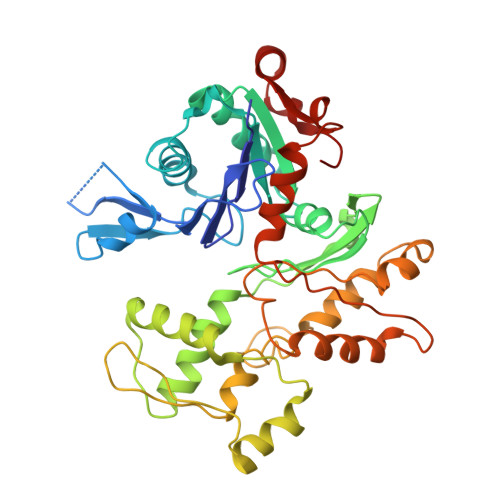Actin crystal dynamics: structural implications for F-actin nucleation, polymerization, and branching mediated by the anti-parallel dimer.
Reutzel, R., Yoshioka, C., Govindasamy, L., Yarmola, E.G., Agbandje-McKenna, M., Bubb, M.R., McKenna, R.(2004) J Struct Biol 146: 291-301
- PubMed: 15099571
- DOI: https://doi.org/10.1016/j.jsb.2003.12.006
- Primary Citation of Related Structures:
1RDW, 1RFQ - PubMed Abstract:
Actin filament nucleation, polymerization, and branching are crucial steps in many forms of cell motility, cell shape, and intracellular organelle movements in a wide range of organisms. Previous biochemical data suggests that an anti-parallel actin dimer can incorporate itself into growing filamentous actin (F-actin) and has a role in branching. Furthermore, it is a widespread belief that nucleation is spawned from an actin trimer complex. Here we present the structures of actin dimers and trimers in two tetragonal crystal systems P4(3)2(1)2 and P4(3). Both crystal systems formed by an induced condensation transformation of a previously reported orthorhombic crystal system P2(1)2(1)2(1). Comparison between the three crystal systems demonstrates the dynamics and flexibility of actin-actin interactions. The dimer and trimer actin rearrangements observed between the three crystal systems may provide insight to in vivo actin-actin interactions that occur during the nucleation, polymerization, and branching of F-actin.
Organizational Affiliation:
Department of Biochemistry and Molecular Biology, University of Florida College of Medicine, Gainesville, FL 32610, USA.

















